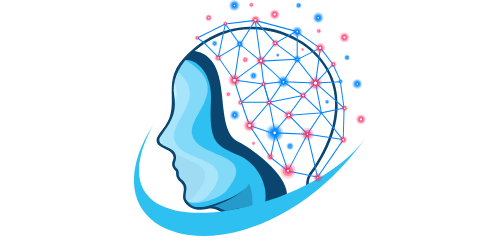AI in Regulatory Change Management
In the domain of Regulatory Change Management, the integration of AI presents a compelling shift in how organizations navigate the intricate landscape of compliance. By harnessing the power of artificial intelligence, companies can not only automate the monitoring of regulatory updates but also anticipate potential impacts before they materialize. This innovative approach promises to revolutionize how businesses adapt to regulatory changes, but as with any new technology, there are considerations and implications that warrant exploration. The interplay between AI capabilities and regulatory compliance opens up a field of possibilities that could redefine how organizations approach governance in an ever-evolving regulatory environment.
Key Takeaways
- AI automates tracking regulatory updates for efficient compliance.
- Machine learning predicts regulatory changes for proactive adjustments.
- Customizable AI tools tailor monitoring to specific regulatory needs.
- Real-time alerts from AI technology enhance compliance responsiveness.
- Enhanced risk management with AI-driven predictive analytics.
Benefits of AI in Compliance
The integration of artificial intelligence (AI) in compliance processes offers organizations a streamlined and efficient approach to managing regulatory requirements. By leveraging AI technologies, organizations can greatly enhance risk mitigation strategies and improve overall efficiency.
AI systems excel in data analysis, allowing for quick and accurate identification of potential compliance issues, enabling proactive measures to address them promptly.
Furthermore, AI enables process automation, reducing the manual workload associated with compliance tasks. This automation not only decreases the likelihood of human error but also frees up valuable resources, allowing compliance teams to focus on more strategic initiatives.
Through machine learning algorithms, AI can adapt and learn from data patterns, continuously improving its ability to identify and address compliance risks effectively.
Challenges of Implementing AI
Implementing AI in regulatory change management comes with various challenges that organizations need to navigate effectively to fully leverage the benefits of artificial intelligence technology.
One of the primary challenges is ensuring data accuracy, as AI systems heavily rely on quality data for effective decision-making.
Implementation hurdles also pose significant obstacles, ranging from technical complexities to organizational resistance.
To overcome these challenges, organizations must invest in robust data management processes and provide adequate training to employees to foster a culture of AI adoption.
Additionally, establishing clear communication channels between stakeholders and AI developers is critical to align expectations and address any misconceptions.
It is essential to have a well-defined implementation strategy that addresses potential roadblocks and ensures a smooth integration of AI into existing regulatory change management processes.
- Data Accuracy: Ensuring the quality and integrity of data inputs is essential for AI systems.
- Implementation Hurdles: Technical complexities and organizational resistance can impede the successful integration of AI.
- Training: Providing employees with the necessary skills and knowledge to work effectively with AI technologies.
- Communication: Establishing clear channels for communication between stakeholders and AI developers.
- Implementation Strategy: Developing a well-defined plan to address challenges and facilitate the seamless implementation of AI.
AI Tools for Monitoring Regulations
AI tools offer advanced capabilities for overseeing regulations effectively and efficiently. In the domain of regulatory compliance, staying abreast of changing requirements is essential for organizations to avoid penalties and maintain operational integrity. Technology solutions powered by AI can help streamline the process of monitoring regulations by continuously scanning vast amounts of data from regulatory bodies.
These tools can automatically identify relevant updates, analyze their impact on the business, and provide real-time alerts to compliance teams. By leveraging machine learning algorithms, AI tools can also predict potential regulatory changes based on historical data and industry trends, enabling proactive compliance measures.
Furthermore, AI tools for overseeing regulations often come equipped with customizable features that allow organizations to tailor the monitoring process to their specific needs. This level of flexibility ensures that businesses can focus on the regulations most pertinent to their operations, saving time and resources while enhancing overall compliance efforts.
Incorporating AI-driven technology solutions into regulatory change management processes can greatly improve efficiency, accuracy, and agility in maneuvering the complex landscape of regulatory compliance.
Best Practices for AI Integration
Integrating artificial intelligence effectively into existing regulatory change management processes requires a strategic approach guided by best practices. Ensuring successful AI implementation for compliance automation involves several key considerations:
- Data Quality Assessment: Conduct a thorough evaluation of existing data sources to verify accuracy and completeness for AI algorithms.
- Collaboration with Compliance Experts: Involve compliance professionals in the AI implementation process to align technology with regulatory requirements effectively.
- Continuous Monitoring and Evaluation: Regularly monitor AI systems for performance, accuracy, and compliance to make necessary adjustments promptly.
- Scalability Planning: Consider future growth and changes in regulatory landscapes when designing AI systems to guarantee scalability and adaptability.
- Interpretability and Transparency: Prioritize the development of AI models that are interpretable and transparent to compliance officers and regulators to foster trust and understanding.
Future Outlook for AI in Compliance
Looking ahead, the evolution of AI technologies in compliance is poised to revolutionize the regulatory landscape by enhancing efficiency and accuracy in managing regulatory change. AI advancements are set to streamline compliance processes, allowing organizations to adapt swiftly to regulatory updates while ensuring adherence to complex requirements. This transformation will greatly reduce manual errors and operational risks, leading to a more robust compliance framework.
—
| Future Outlook for AI in Compliance | ||
|---|---|---|
| Key Points | Details | Benefits |
| Enhanced Regulatory Monitoring | Real-time monitoring of regulatory changes | Improved compliance agility |
| Automated Risk Assessment | AI-driven risk assessment tools | Enhanced risk management |
| Predictive Compliance Analytics | Predictive analytics for compliance trends | Proactive compliance measures |
| Regulatory Reporting Automation | Automated generation of regulatory reports | Time and cost efficiency |
| AI-Powered Compliance Training | Personalized AI-based training programs | Enhanced staff knowledge |
The future of AI in compliance is promising, with its potential to drive significant regulatory impact through efficiency and effectiveness. By leveraging AI advancements, organizations can navigate the complex regulatory environment with greater ease and precision.
Conclusion
To sum up, the integration of AI in regulatory change management offers numerous benefits in streamlining compliance processes and enhancing organizations' ability to adapt to evolving regulations.
Despite the challenges of implementation, AI tools for monitoring regulations provide valuable insights for proactive compliance measures.
Looking ahead, how can organizations leverage AI to stay ahead of the regulatory curve and navigate complex compliance landscapes with precision and efficiency?







